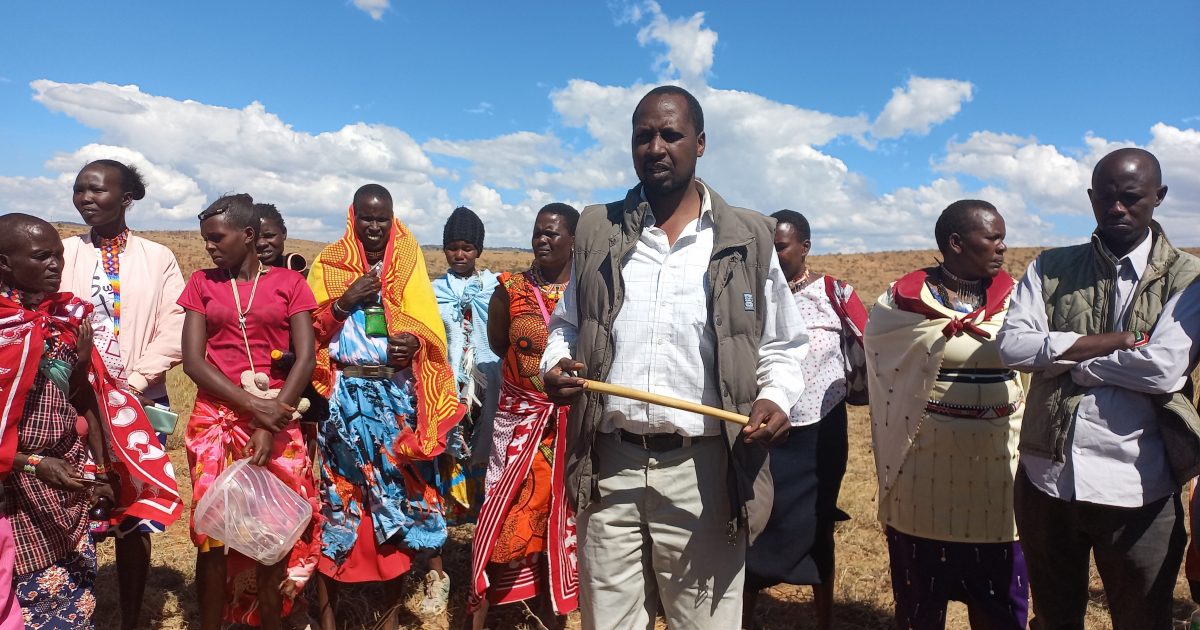The cactus or opuntia is an invasive thorny plant that grows well mostly in the parts of the dry and rocky areas of the country.
The species is normally a menace to the ecosystem and its encroachment reduces grazing areas especially for the pastoralists.
Opuntia, commonly called prickly pear which is a native to the Caribbean region, has not only overtaken the landscape and shrunken the forage space for livestock, but also produces purple-reddish fruits that are highly toxic to animals.
It is one of the most widespread and naturalized plants in the arid and semi-arid areas of Kenya, with extreme effects on rural livelihoods and the environment.
In Laikipia North, the Maiyanat Community has been struggling to keep the invasive pest away which has affected over 60 percent of their land and this has seen them not only lose their grazing land but other members relocating.
However, all has not been lost as the women in the community have been benefiting from the invasive species as they are making money as they participate in uprooting it.
“We have been using natural control measures as well as using biological methods to fight the weed through the support from development partners like the Food and Agriculture Organization (FAO) of the United Nations,” Kashara Kitonga, the Vice chairperson Maiyanat Community Land says.
The natural way, he explained, includes uprooting the weed manually while the biological way is introducing a sap sucking insect which feeds on the cactus but is a bit expensive.
“The approach of employing women and the youth to uproot the cactus weed at a fee of Sh500 per day has been done through the support of partners like the FAO in a move to empower the women and provide them with a source of income,” he said.
The women, Kitonga added, at the same time also dig semicircular bunds and swells to reduce soil erosion, helping in water retention even as they plant grass for their animals.
Kitonga further said that restoration of their land has reduced conflicts between the community and other private ranch owners in the area.
Nkuyai Lemale, one of the women who is not only a board member but works in uprooting the species, said as they rehabilitated their land and they were also making some money.
“Women are paid Sh500 per day to uproot the weeds and destroy them and also to plant grass. This has empowered many of us and we are able to pay school fees for our children and also buy food for our families,” she said adding that as a community who relies on livestock for their livelihood, making an extra coin for them is Godsend.

Lemale however confirmed that the uprooting of the cactus also comes with its share of challenges and the biggest that the women experience is the thorns that normally prick their hands.
“We do not have any protective wear to use and we use our bare hands to uproot the plant. The thorns hurt our hands and we are not sure if they are poisonous hence risking our health,” she said
Lemale added that the cactus also affects their animals especially the goats during the feeding as the sharp thorns pierce their eyes and also destroy their teeth. “Most of our goats are blind,” she said.
Yoakim Kuraru, the Maiyanat Community Land manager said the cactus has seen over half of their 16,000 acres not utilized.
“The invasive species has forced some people move out of their homes. The cactus is harmful to the animals and the goats go blind and those that consume the plant’s fruit are likely to suffer from digestive issues,” he said.
He added that in order for the community to conserve and protect their land, they have an ‘Opuntia day’ that is carried out once a month where members voluntarily come out in large numbers to uproot a sizable amount of the cactus within their homesteads.
Kuraru said despite the efforts being made, the invasive cactus is still spreading due to wildlife like elephants and monkeys. The fruits from the cactus are edible and sweet and preferred by monkeys, camels and even human beings.
The manager said they are seeking support for a tractor that will help in digging out pits to bury the weed deep so that it does not multiply.
Husna Mbarak from the FAO Land Governance, Environment and Natural Resources said one of the biggest problems in most of the rangelands and community land is the invasive species.
“The Opuntia is one of the invasive species which has pros and cons. The cactus has benefits such as production of wine, marmalade, jam, and in some instances it is medicinal,” she said.
She said FAO has introduced a process of breaking down the opuntia to become fodder and mix up with the other fodder for our livestock.
“There is a tool we are using to be able to shred the opuntia and then let it get dried and then mixed up with other fodder, including the types of grasses the community has. Once the weed has dried up, it can be used to make manure,” said Mbarak.
“We should also look at the beneficial side of this invasive species and make use of it and earn a livelihood,” she said.
The Regional Centre for Mapping of Resources for Development (RCMRD) has developed the Invasive Species Mapper – a smartphone application that facilitates the collection of data on the current distribution of prickly pear and other invasive species in Kenya.
Using satellite data and geospatial technologies, the app was designed to accurately map invasive species hotspots where particular plants are concentrated, which is important in prioritizing and planning both financial and human resources to eradicate invasive plant species.
By Wangari Ndirangu





